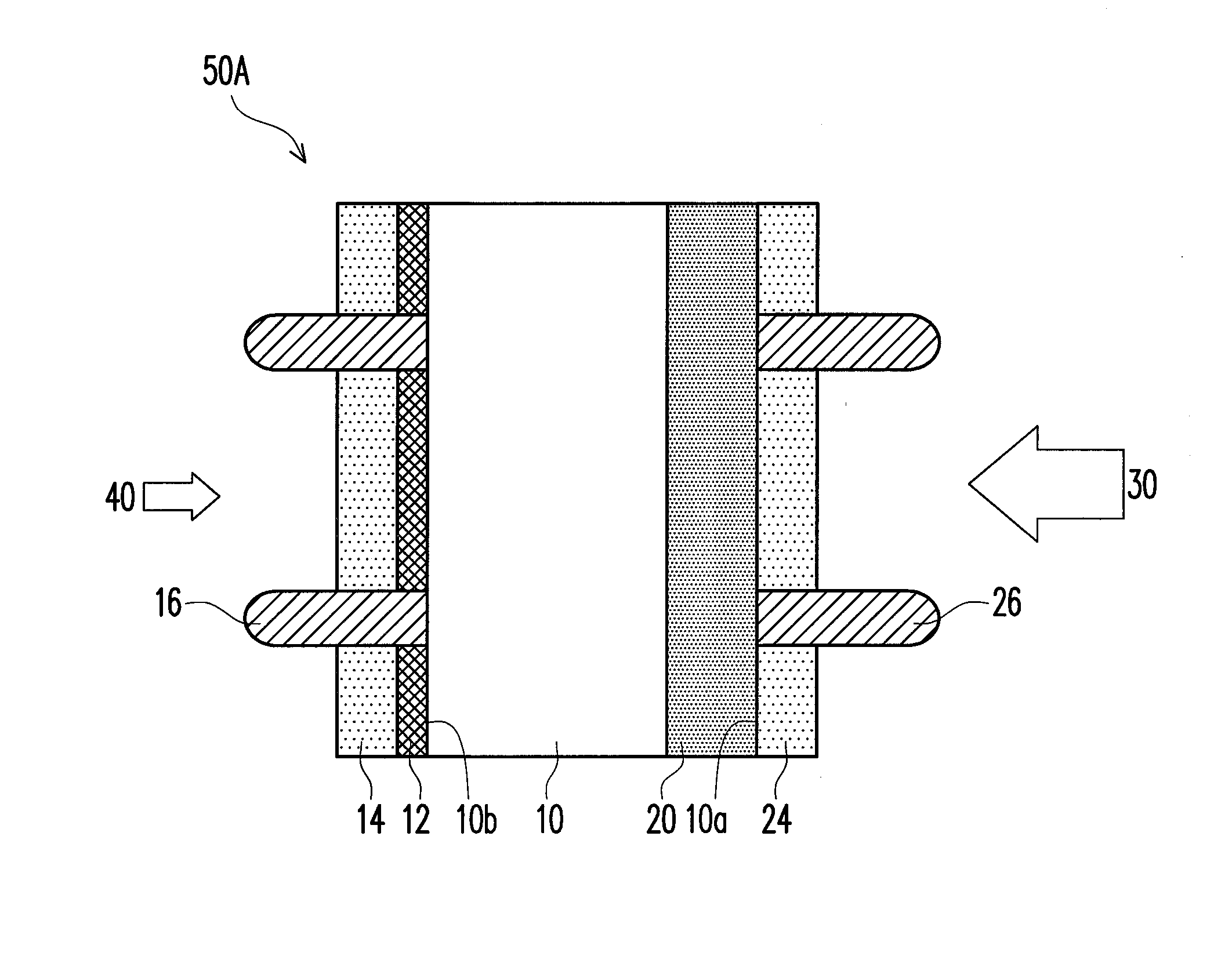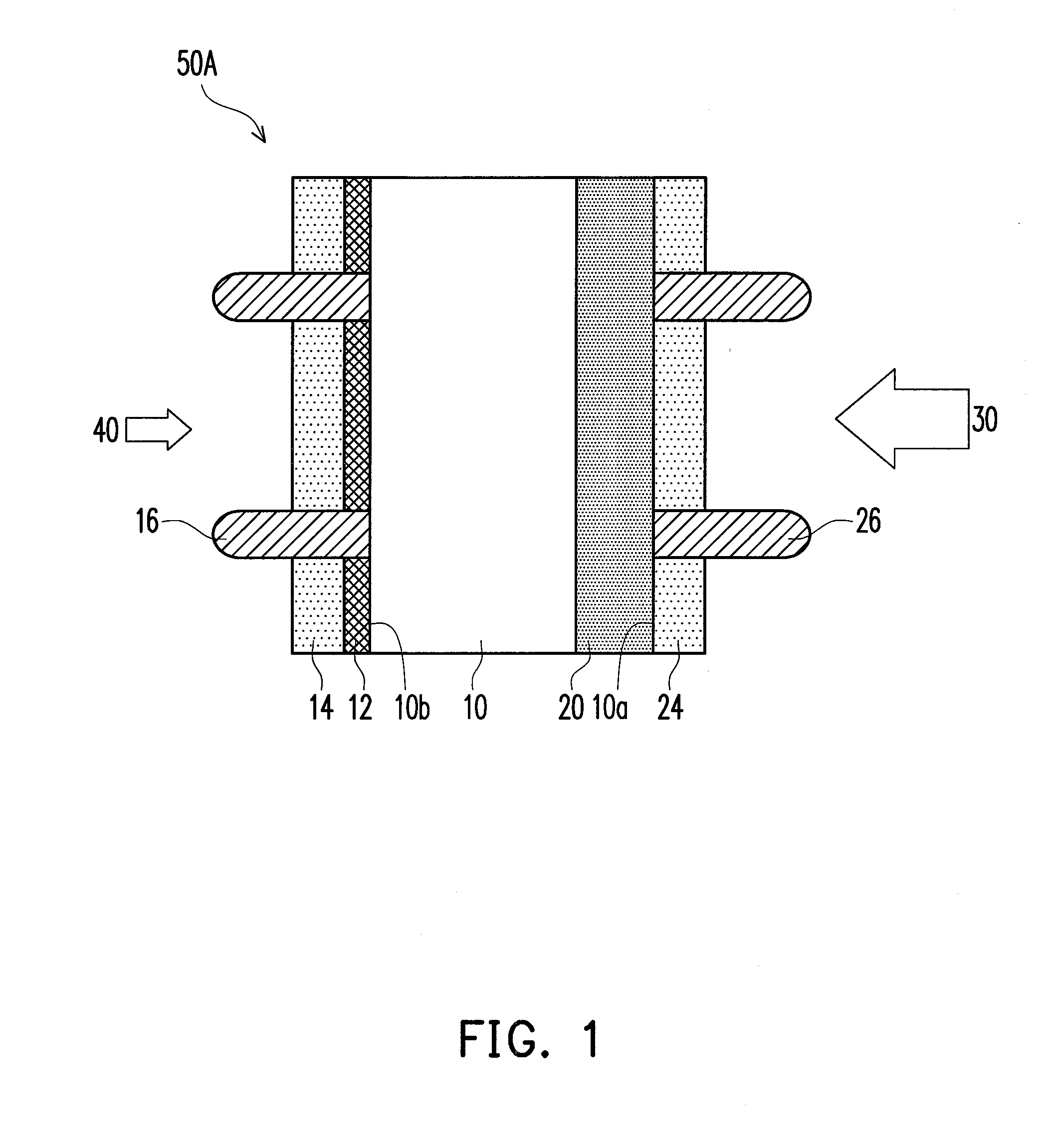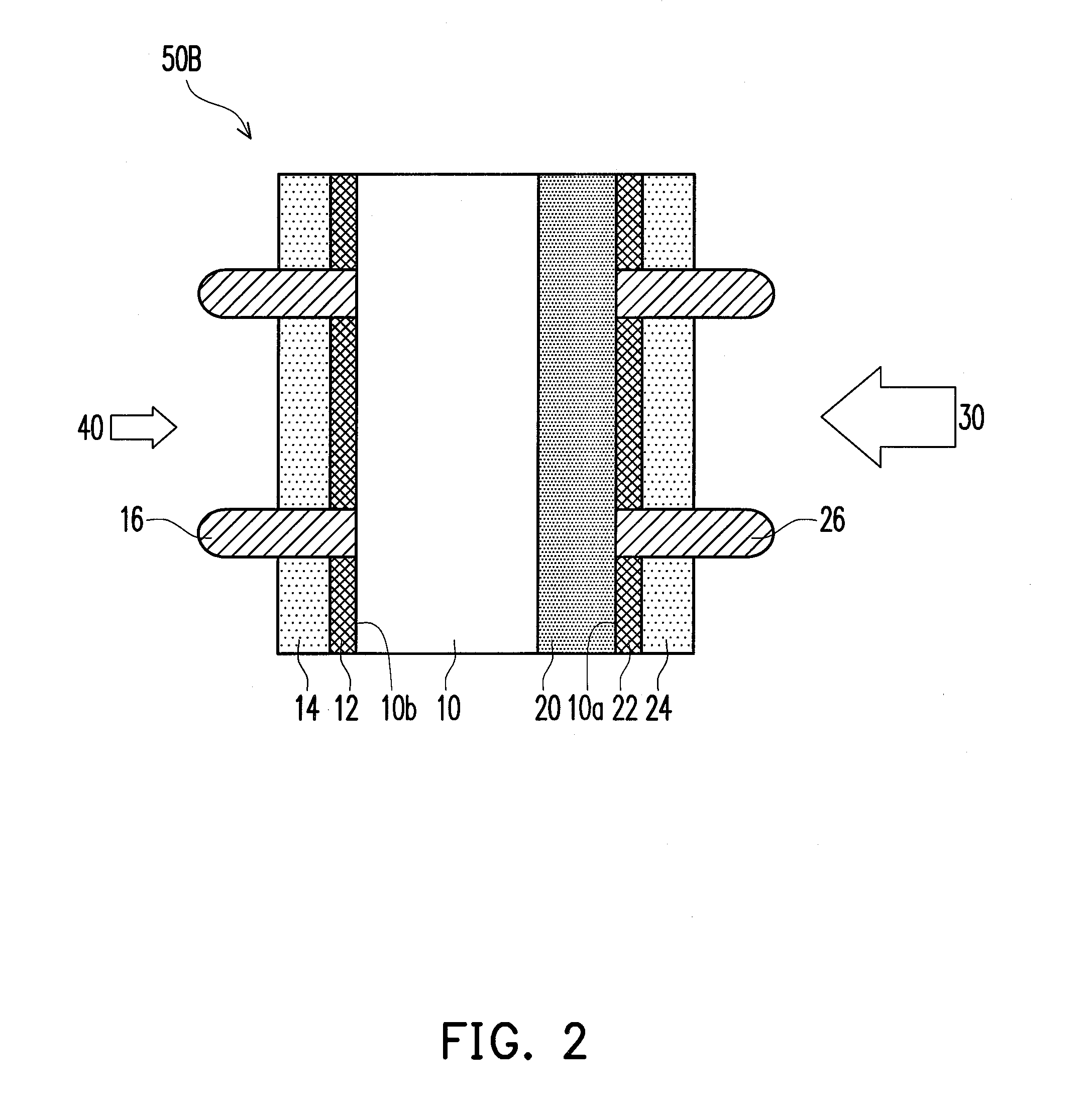Bifacial solar cell
- Summary
- Abstract
- Description
- Claims
- Application Information
AI Technical Summary
Benefits of technology
Problems solved by technology
Method used
Image
Examples
Embodiment Construction
[0022]FIG. 1 is a cross-sectional view of a bifacial solar cell according to an embodiment of the present invention. FIG. 2 is a cross-sectional view of another bifacial solar cell according to an embodiment of the present invention. For simplicity's sake, the same numerals are used in the drawings and the description to refer to the same or like parts.
[0023]Referring to FIG. 1, the bifacial solar cell 50A includes a semiconductor substrate 10, a fixed charge layer 12, an anti-reflection coating layer 14, an electrode 16, a semiconductor layer 20, an anti-reflection coating layer 24 and an electrode 26.
[0024]Referring to FIG. 2, the bifacial solar cell 50B includes a semiconductor substrate 10, a fixed charge layer 12, an anti-reflection coating layer 14, an electrode 16, a semiconductor layer 20, a fixed charge layer 22, an anti-reflection coating layer 24 and an electrode 26.
[0025]The semiconductor substrate 10 is of a first conductive type, and the semiconductor layer 20 is of a ...
PUM
 Login to View More
Login to View More Abstract
Description
Claims
Application Information
 Login to View More
Login to View More - R&D
- Intellectual Property
- Life Sciences
- Materials
- Tech Scout
- Unparalleled Data Quality
- Higher Quality Content
- 60% Fewer Hallucinations
Browse by: Latest US Patents, China's latest patents, Technical Efficacy Thesaurus, Application Domain, Technology Topic, Popular Technical Reports.
© 2025 PatSnap. All rights reserved.Legal|Privacy policy|Modern Slavery Act Transparency Statement|Sitemap|About US| Contact US: help@patsnap.com



